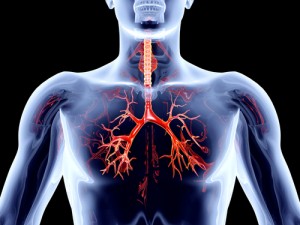Excess Body Mass May Protect Against Idiopathic PAH Mortality

 Despite improved understanding of the etiology of pulmonary arterial hypertension (PAH), the condition remains a severe and progressive disease, ultimately leading to right-sided cardiac failure. It continues to register significant morbidity and early mortality, with estimates showing that 1,000 Americans are diagnosed with PAH per year. Research and clinical advancements over the last decade have led to positive improvements in the management of PAH, however, idiopathic pulmonary arterial hypertension (IPAH) is a rarer disease and occurs in about one in every one million patients each year.
Despite improved understanding of the etiology of pulmonary arterial hypertension (PAH), the condition remains a severe and progressive disease, ultimately leading to right-sided cardiac failure. It continues to register significant morbidity and early mortality, with estimates showing that 1,000 Americans are diagnosed with PAH per year. Research and clinical advancements over the last decade have led to positive improvements in the management of PAH, however, idiopathic pulmonary arterial hypertension (IPAH) is a rarer disease and occurs in about one in every one million patients each year.
[adrotate group=”4″]
Recent evidence has shown a “paradoxical” decrease in morbidity and mortality with increasing body mass index (BMI), in patients with heart failure. However, the impact of BMI in patients with idiopathic pulmonary arterial hypertension (IPAH) remains poorly understood.
In a study entitled “Survival advantages of excess body mass index in patients with idiopathic pulmonary arterial hypertension,” recently published in the journal Acta Cardiologica, Hu Ec and colleagues examined whether BMI is a prognostic factor in IPAH.
The researchers assessed a total of 173 patients with IPAH, who were then subclassified into categories according to their BMI, and were defined as under-weight (< 18.5 kg/m2), normal weight (18.5 to 24.9 kg/m2), overweight, and obese (25 to 34.9 kg/m2).
[adrotate group=”3″]
All groups with similar hemodynamic parameters were assessed using right heart catheterization and levels of NT-proBNP. The overweight group was older and exhibited lower cardiopulmonary functioning, as assessed by the WHO criteria. Furthermore, compared to the other groups, the overweight group had a larger ventricular end-diastolic dimensions (LVEDDs).
Results from this study revealed that the overweight and obese group had a higher survival rate compared to the normal weight and underweight groups. In addition, the researchers found that a lower BMI, higher functioning, lower cardiac index, smaller LVEDDs and absence of targeted medication were independent predictors of mortality. Based on these findings, the research group concluded that an excess in body mass might be a protective factor for death in patients with IPAH.
In other developments related to pulmonary hypertension, and somewhat in contrast to Hu Ec’s findings on the relationship between BMI and IPAH mortality, researchers at Central Hospital in Xi’an China published a study, titled, “Calorie Restriction Attenuates Monocrotaline-induced Pulmonary Arterial Hypertension in Rats,” which showed that caloric restriction in rats improved symptoms of PAH in the animals.







